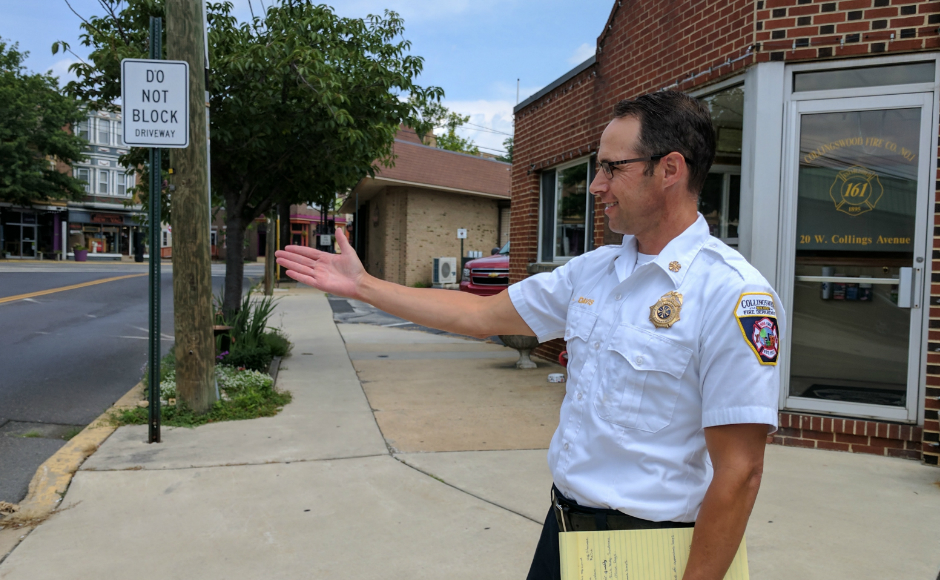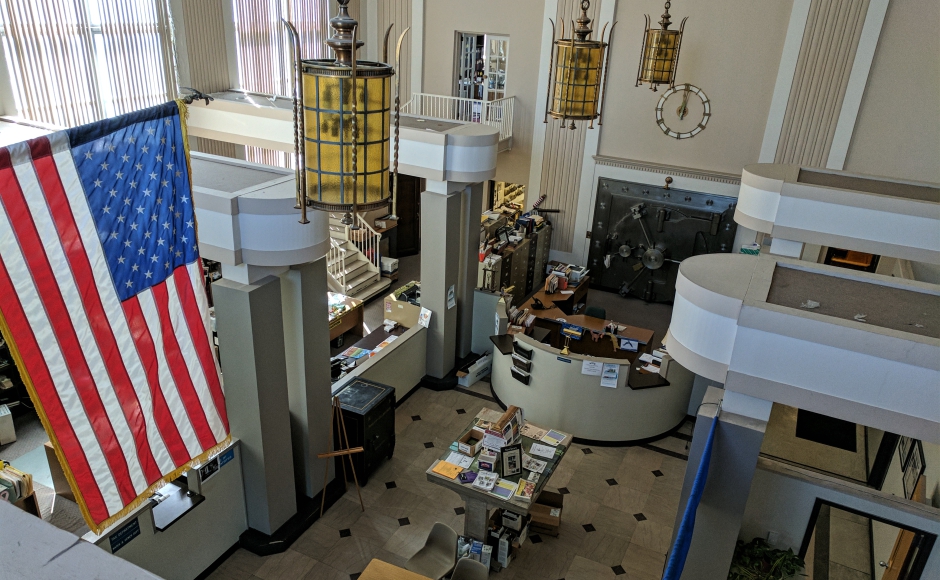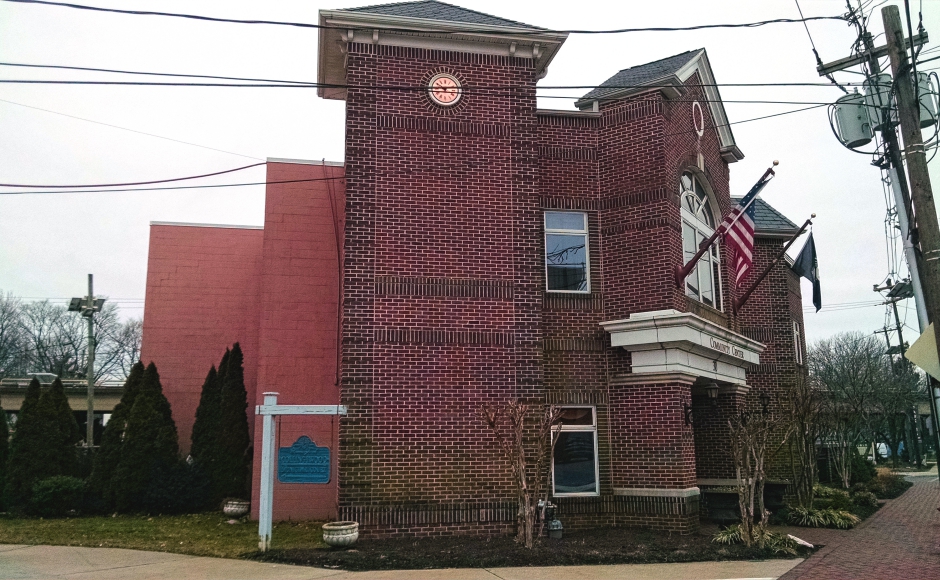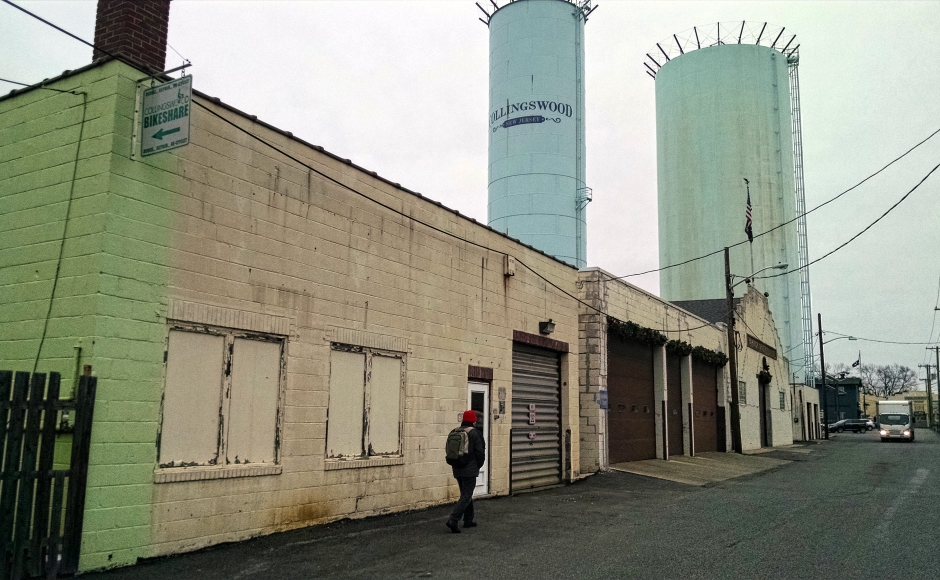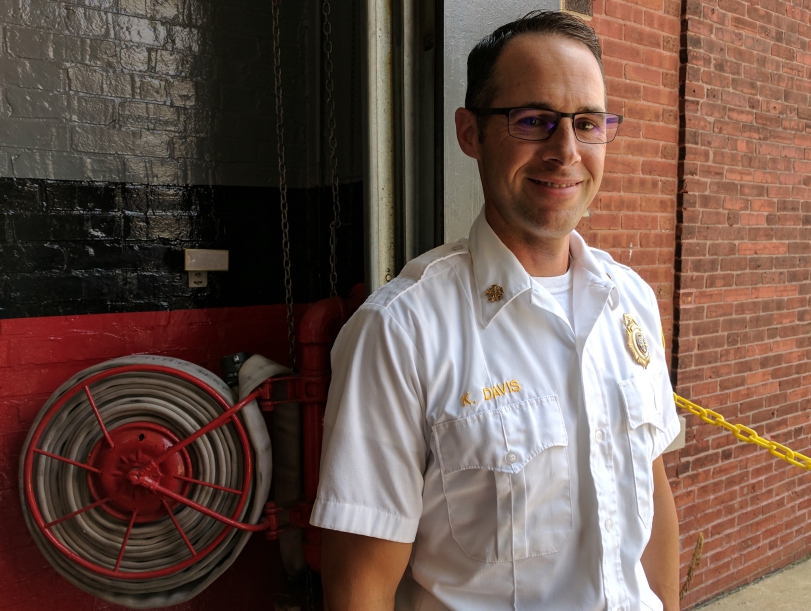The borough has long considered reshuffling its municipal government, emergency services, and public works headquarters, but a bad ice storm this winter has accelerated the timeframe for those plans.
By Matt Skoufalos | July 21, 2017
Since they were displaced from their borough hall offices by an ice storm in March, Collingswood municipal employees have been serving the needs of the public from the first floor of the town community center.
By month’s end, Collingswood Mayor Jim Maley expects repairs will be completed, sending everyone back to borough hall.
It’s been less-than-optimal conditions for the past few months, but Maley said borough staff have borne up well under them.
“They’ve all been champs,” he said. “They’ve been squeezed into pretty tight quarters. Nobody’s had a private office. They’ve made it work and they’ve still been serving people.”
The circumstances that forced borough employees from their offices underscored the deteriorated condition of the building, but they also opened a door for a conversation about how the entire operation could be re-worked. The local government has long set its sights on relocating Collingswood’s police, fire, and public works services outside of the borough central business district to better use the space. Now that distant objective is rapidly approaching a window of opportunity, and Maley said the borough is revisiting those old plans with some new ideas.
Department heads will begin meeting monthly to devise an operational plan that will inform the design of the facilities. Maley said he wants “to get down to some more definitive ideas” within six months.
“All of these are still pretty abstract concepts,” he said.
“What is real is the police station’s falling apart, the fire station’s falling apart, and neither one of them are equipped for today.
“We can’t fit everything that we need in that [public works] building, and the police station and DPW sit in the middle of what has become valuable parking area.
“All those factors all get us to ‘we have to fix some of this,’” Maley said.
What’s left is to decide how to get there. The project team includes borough engineers Remington and Vernick, Collingswood-based Kitchen and Associates, and the Camden County Improvement Authority (CCIA), which will serve as project manager. So far the borough has authorized up to $1 million for planning studies and property acquisition, but Maley said there’s no hurry or obligation to spend it all.
“We’re also looking at how we could accomplish this to minimize any impact to taxpayers,” Maley said. “I know everybody will be comparing it to the [school board] stadium [project]. That’s why we’re mindful not just of what the costs are, but are there other ways to generate revenue here. And I think there are.”
By 2019, the borough could free up cash for the project by retiring about $3 million in debt at the same time a scheduled ramp-up of the PILOT agreement with the Heights of Collingswood puts another few hundred thousand dollars a year on the books.
Additional money could come from grant opportunities, the disposition of assets, and possible public-private construction partnerships.
Maley previously has described theoretical plans to shift public works operations to the borough-owned former M&E Marine Supply property on Route 130; he said an environmental investigation into the suitability of the site is nearly complete.
Relocating the garage could allow for the expansion of the borough community center beyond its current footprint to incorporate municipal offices, a council chamber, and potentially a few floors of private office space.
Another cost-saving design option would involve joining the fire and police departments into a single facility. Erecting structured parking with commercial office space in either of those sites could help defray the costs of relocating the departments while adding new foot traffic that “would be really beneficial to our existing downtown,” Maley said.
“By adding more office people in, you’ve got daytime users,” he said. “You beef up your traffic during the day similarly to the way you beef it up at night. With that comes all kinds of revenue sources.”
Old infrastructure
Since it was built in 1895, the Collingswood firehouse has been sporadically retrofitted from a single-engine building into a vastly different structure that doesn’t meet the needs of the current department, said Collingswood Fire Chief Keith Davis.
“You make do with what you have, and you kind of piece stuff together,” Davis said.
“The nature of our occupation is everybody chips in and you make it work. [But] we have to think for the future.”
An addition built in the 1980s to house office equipment and extra engine bays now also contains fitness equipment, a tech bench, and other supplies. The floor is cracked, the roof leaks, and it’s a snug fit between the ladder truck and the drop ceiling above.
Quarters in the rear of the firehouse are cramped, and their dividers don’t reach the ceiling, which means a nasty cold can rip through an entire shift during flu season, Davis said. The bunks are also adjacent to operations bays, so firefighters are in close proximity to contaminants from the diesel exhaust that linger on the trucks after a service call. There’s also no separate quarters for female staff.
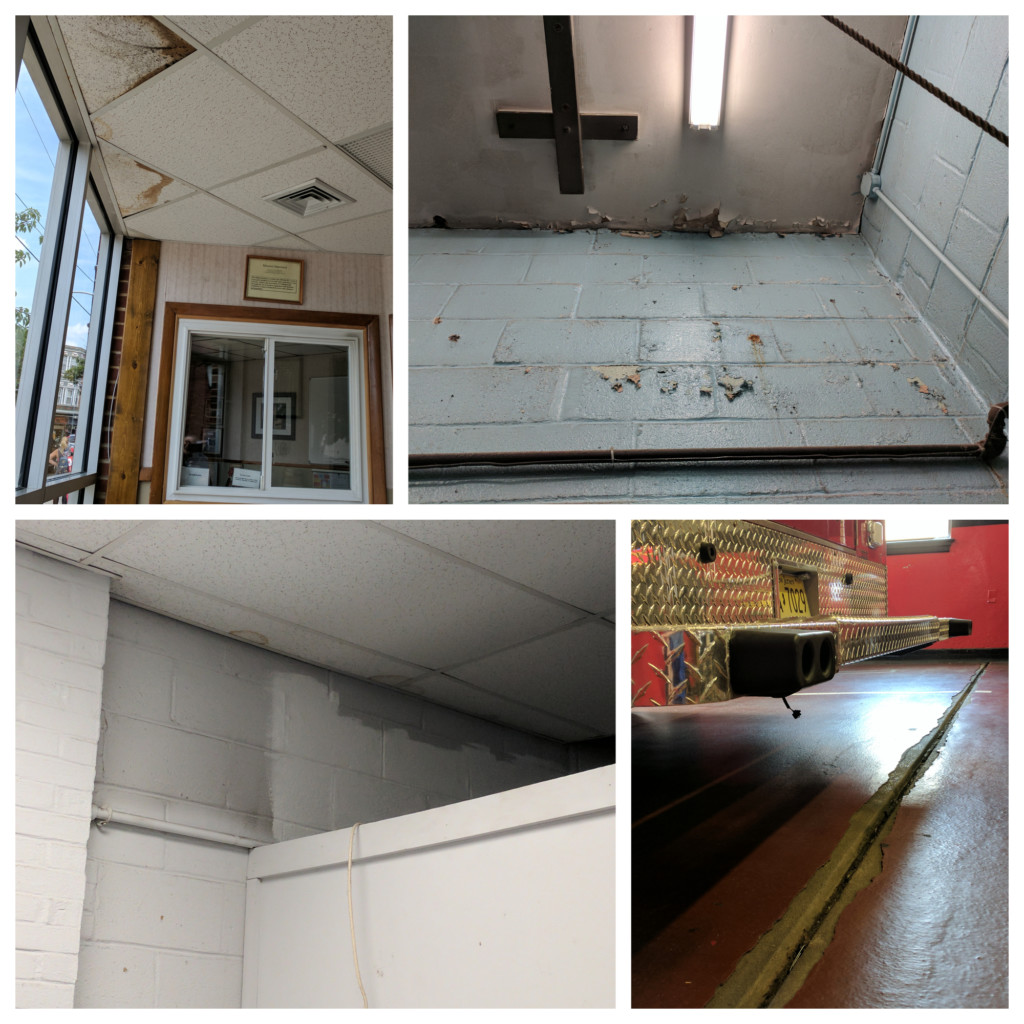
Deterioration at the Collingswood Fire Department includes mold, peeling paint, cracked flooring, and quarters that are unsuitably separated. Credit: Matt Skoufalos.
“Our staff is here one-third of their life,” Davis said.
“They’re always on-call. The building wasn’t built to accommodate that staffing.”
A step into the public entrance to the the station makes it out of compliance with the Americans with Disabilities Act, and the ceiling in the lobby shows signs of water intrusion from the flat roof above.
The layout of the station itself is also a concern.
Set back from the road at an angle, firefighters have to block traffic to turn right onto Collings Avenue, and must cut into the parking lot behind the borough municipal building across the street when re-entering the garage.
That increases response times, Davis said. He also pointed out that the current fire house offers no parking for firefighters or the public.
“Day to day, it’s phone calls, public needs, non-emergency needs of inspections, questions, public outreach, community risk reduction and fire prevention demonstrations,” Davis said. “When the original part was built, that wasn’t part of the fire service.”
The fire company, which is a nonprofit entity, owns the building and leases it to the borough. Davis thinks it could be sold, reconfigured, or otherwise put to a different use as part of a redevelopment plan. But he believes a new building, possibly one shared with the borough police department, would better serve everyone.
“The firehouse is a piece of the community,” Davis said. “It’s going to be for everybody. A new facility, or at least an amended facility to meet our current needs, would be great to have.”
Shared spaces
A combined fire-and-police building could share a number of common spaces, from joint training and office areas to exercise and storage facilities to a combined, public-facing lobby.
It could open up room for a joint operations command center during emergencies.
But Davis believes that, most importantly, a shared space could also deepen a shared culture among local first responders.
“[Collingswood Police] Chief [Kevin] Carey and I get along very well, and we work together on a lot of things,” he said. “It trickles down through the staff.”
Like Davis, Carey said his department has also outgrown its needs since moving into its current building in 1950. Simply put, “We’re out of room,” he said.
“Originally our processing area was garage space,” Carey said. “Our detention area also houses our locker room and our break room. Our sergeant’s office is also a conference room and a refuge area for walk-in complaints.
“We have several rooms that are multipurpose rooms that should not be,” he said. “It’s not good for operations or security. It doesn’t work.”
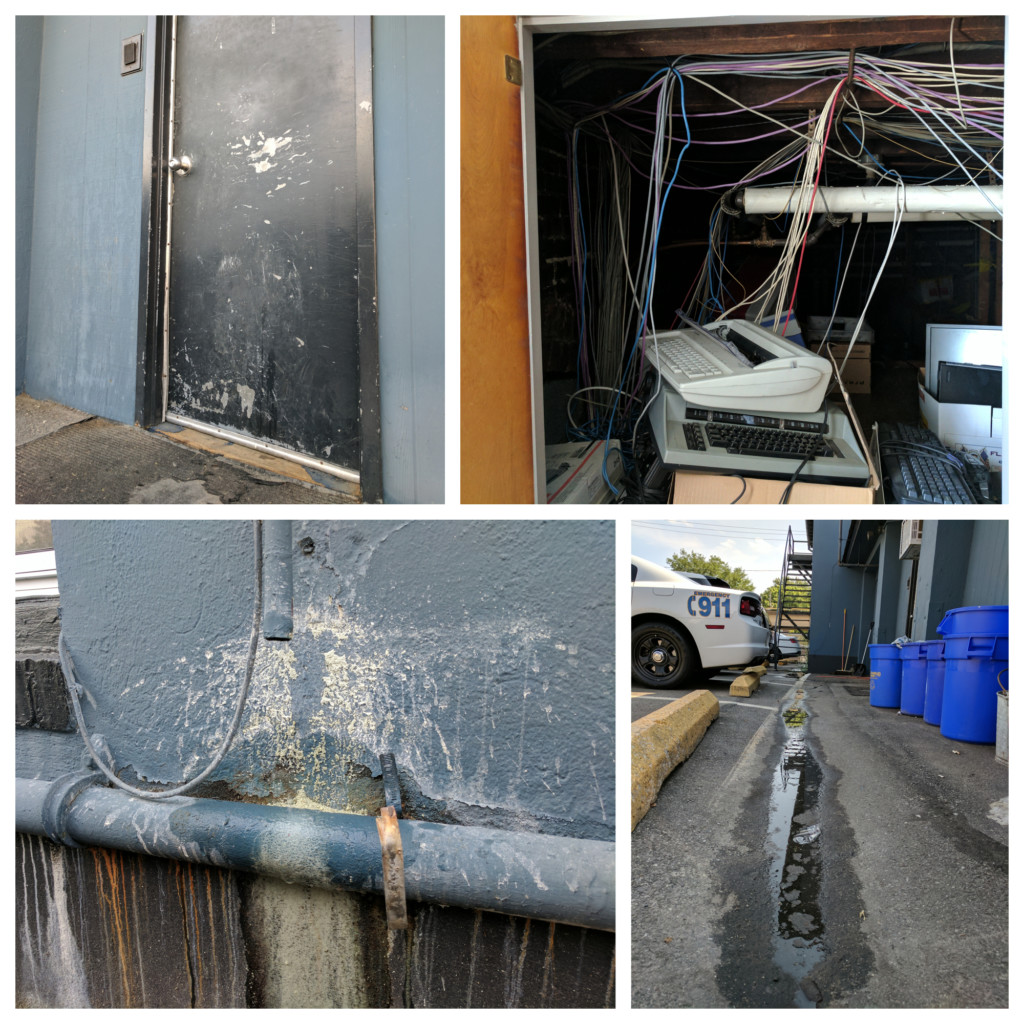
Disrepair at the Collingswood Police Department includes aging infrastructure, water intrusion, and crammed storage space. Credit: Matt Skoufalos.
As with the borough fire station, the outdated design of the building is no longer suitable to the needs of the police department.
For starters, its detective bureau is located offsite, at Heights of Collingswood apartment facility, because there simply isn’t enough space for it anywhere else in the station.
Just about every square inch of storage space in the department is occupied: closets, crawlspaces, and filing cabinets all are packed to bursting.
There’s one working bathroom on the first floor, and it’s in Captain Tom Hartshaw’s office; without in-cell facilities, it’s also used by prisoners.
Upstairs, recordings made in the interview room are often obscured by the sound of the passing Speedline train. A small section of a shared office is given over to a conference table that can’t seat more than five or six people at a time for training. The same room also houses cubicles, workstations, an electronics charging bay, and more files.
Then there’s the deterioration of the building itself. Historically, members of the department have made fixes themselves, but the building needs major plumbing and HVAC repairs that exceed their ability to do so. Environmental issues, from roof leaks to water intrusion to mold, are a persistent fight. Officers can’t store items on the floors of their lockers because they flood. The windowless break room and overworked heating and cooling system are a poor match for extreme temperatures.
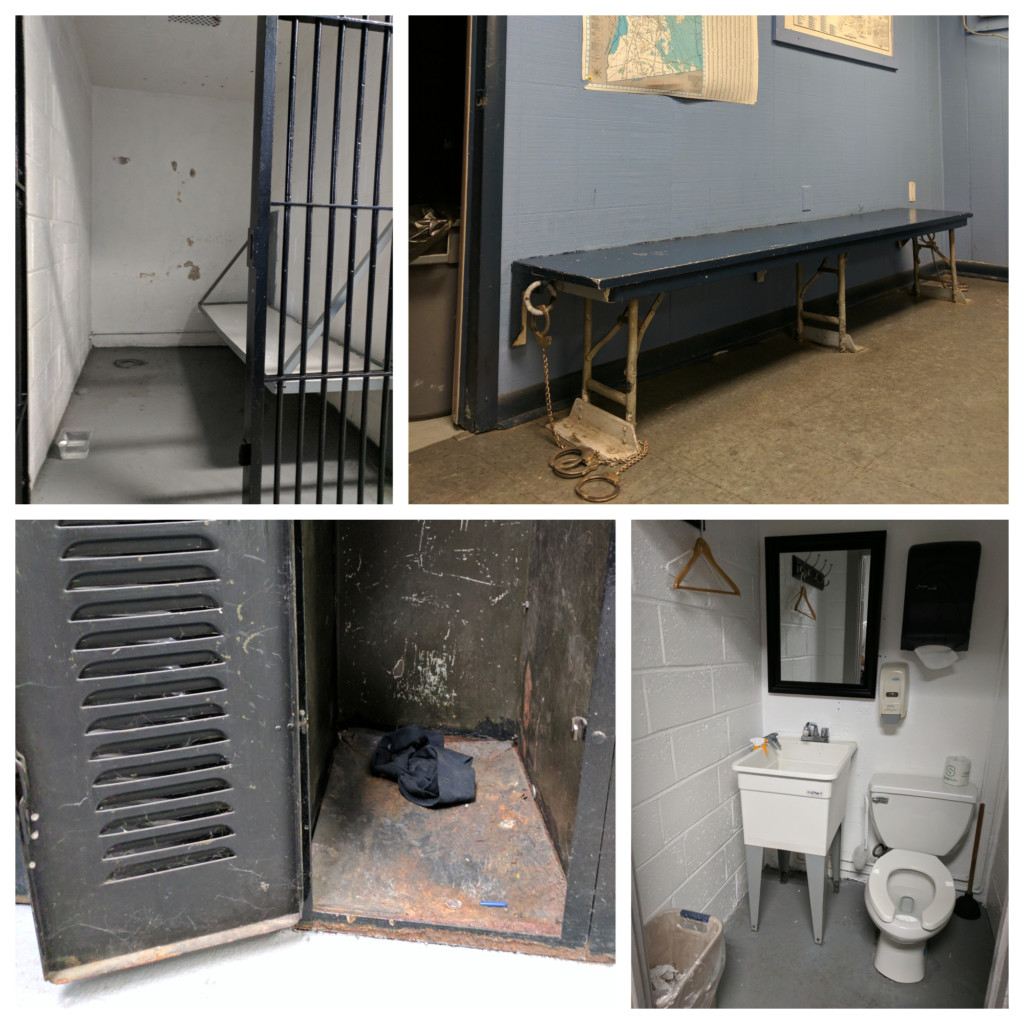
The Collingswood Police Department building has out-of-date prisoner, locker, and toilet facilities. Credit: Matt Skoufalos.
Carey is also irked that the condition of the facility is standing in the way of his department earning best practices accreditation from the state chief’s association, which could lower its insurance costs.
“We’ve re-worked a lot of our policies and we still can’t achieve it,” he said.
“That’s something that would be addressed if we get a new building.”
Like Davis, Carey also believes that a shared space with the Collingswood Fire Department could make the most sense for the borough.
“I think that would be phenomenal,” the police chief said.
“We work really well together, and I think a joint space would be great.”

